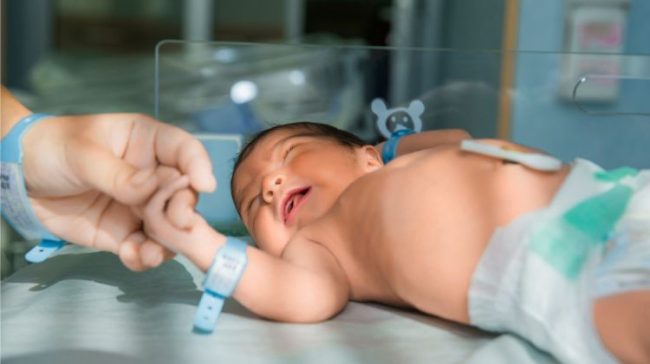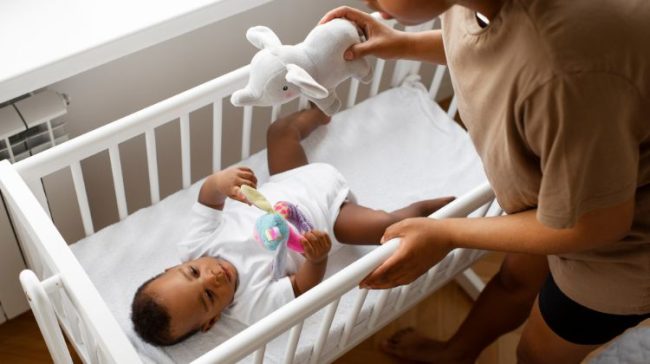Cesarean sections, commonly referred to as C-sections, are surgical procedures employed to deliver a baby through incisions in the abdomen and uterus rather than vaginally. Though C-sections can be lifesaving for both mother and baby in specific situations, they also bring certain risks and potential complications that can influence future pregnancies. This article delves into the long-term consequences and effects of a C-section on subsequent pregnancies.
Let’s discuss them in detail.
1. Scar Tissue Formation
One of the primary concerns regarding multiple C-sections is the formation of scar tissue. With each C-section, the likelihood of developing adhesions—bands of scar tissue that can form between abdominal tissues and organs—increases.
Impact: Adhesions can lead to pain and fertility problems. They can also make any future C-sections more challenging due to the need to dissect through or around the scar tissue, potentially increasing the risk of surgical complications.
2. Risk of Uterine Rupture
Uterine rupture is when the uterus tears, typically at the site of a previous C-section scar. It is a severe, though rare, complication.
Impact: Women who had a C-section and aim for a vaginal birth in subsequent pregnancies (VBAC – Vaginal Birth After Cesarean) face an increased risk of uterine rupture. While the risk is less than 1%, it’s a critical concern, as a rupture can be life-threatening for both the mother and the baby.
3. Placental Complications
Previous C-sections may increase the chances of certain placental problems in future pregnancies, such as:
- Placenta Previa: This is where the placenta lies low in the uterus, sometimes covering the cervix.
- Placenta Accreta: Here, the placenta attaches too deeply into the uterine wall.
- Placenta Increta and Percreta: These are severe forms of Placenta Accreta, where the placenta invades the muscles of the uterus or even grows through the uterine wall.
Impact: These complications can lead to severe bleeding during delivery, requiring a hysterectomy in extreme cases. They also increase the risk of premature birth and other complications.
4. Risk of Repeat C-Section
After one C-section, the probability of having another increases. Some women may choose or be advised to have another C-section to avoid potential risks associated with VBAC.
Impact: While many repeat C-sections can be performed safely, each subsequent procedure can pose an increased risk of surgical complications, such as infections, blood transfusion, or injury to other organs.
Also Read: Is it Safe to Have Multiple C-Sections?
5. Longer Healing Time
After one or more C-sections, the recovery time might be prolonged.
Impact: Multiple incisions can potentially lead to longer healing times, more pain, or a heightened risk of infection.
Also Read:
6. Emotional and Psychological Impact
While the physical effects are significant, we cannot undermine the emotional and psychological impacts.
Impact: Some women might feel a sense of loss or disappointment if they had hoped for a vaginal birth. There’s also potential for post-traumatic stress, especially if the C-section was emergent or followed a particularly challenging labor.
7. Fertility Issues
Though rare, scar tissue formation from a C-section might lead to fertility problems.
Impact: Adhesions can block the fallopian tubes, making it difficult for an egg to be fertilized or for a fertilized egg to reach the uterus.
Considerations for Future Pregnancies
If you’ve had a C-section and are contemplating a subsequent pregnancy:
- Consultation: Always consult with a medical professional. They can provide guidance based on your health, history, and specific circumstances.
- VBAC: Depending on various factors, some women might be candidates for VBAC. If you’re considering this, ensure your delivery takes place in a facility equipped to handle emergency C-sections, given the associated risks.
- Spacing: It’s usually recommended to wait at least 18-24 months after a C-section before becoming pregnant again. This allows the body ample time to heal, reducing the risks mentioned above.
Final Thoughts
While C-sections can be lifesaving, it’s crucial to be aware of the potential impacts on future pregnancies. Whether you’re planning for another child or reflecting on your birthing options, staying informed and maintaining open communication with healthcare professionals is paramount. Every woman’s experience and risk profile is unique, so personalized advice and care are essential for ensuring the best outcomes for both mother and baby.
Frequently Asked Questions (FAQs)
1. Can I have a vaginal birth after a C-section?
Yes, many women can have a Vaginal Birth After Cesarean (VBAC). However, the decision to pursue VBAC depends on several factors, including the type of incision used in the previous C-section, the reason for the initial C-section, and the overall health of the mother. It’s essential to discuss with your healthcare provider to determine if VBAC is a suitable option for you.
2. How long should I wait after a C-section before getting pregnant again?
It’s generally recommended to wait at least 18-24 months after a C-section before trying to conceive again. This period allows your body sufficient time to heal and reduces potential risks associated with closely spaced pregnancies.
3. Are there increased risks with multiple C-sections?
Yes. With each subsequent C-section, the risk of complications such as adhesions, placental abnormalities, and uterine rupture may increase. Always discuss your health and history with a medical professional when planning future pregnancies.
4. Is a C-section scar a cause for concern in future pregnancies?
While most C-section scars heal well, there’s a slight risk of uterine rupture at the scar site, especially during a VBAC. Other concerns include the formation of scar tissue or adhesions, which can affect subsequent surgeries or pregnancies.
5. What are the chances of uterine rupture during a VBAC?
The risk of uterine rupture during a VBAC is relatively low, usually less than 1%. However, if it occurs, it’s a medical emergency and can be life-threatening for both the mother and baby.
6. Does a C-section impact my fertility?
While C-sections do not directly affect fertility, the formation of scar tissue or adhesions after surgery can, in rare cases, lead to fertility issues by blocking the fallopian tubes.
7. Can I choose to have a C-section even if I don’t have any medical reasons?
Some women opt for elective C-sections due to personal preferences, previous traumatic birth experiences, or other non-medical reasons. It’s crucial to discuss the benefits and risks with a healthcare provider, as the decision should be based on informed consent and understanding of potential implications.
8. Are the recovery times longer with each subsequent C-section?
Not necessarily. While the risk of complications may increase with multiple C-sections, the recovery time varies from one individual to another. However, complications like infections or excessive scar tissue can prolong recovery.
9. Is it safe to have more than three C-sections?
Many women have had multiple C-sections safely, but each procedure can pose increasing risks. It’s essential to understand these risks and consult with a healthcare professional when planning future pregnancies.
10. Can a previous C-section affect the position of the baby in future pregnancies?
While a previous C-section doesn’t directly influence the baby’s position, scar tissue from the procedure might restrict the baby’s movement, potentially affecting its position. However, many other factors can influence the baby’s position, and a prior C-section is just one potential factor.



